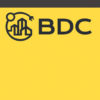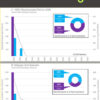[Originally published 2nd quarter 2011, in arcCA 11.2, “The Business of Architecture.”]
Thinking About Business Models
Nancy Kleppel is the founding principal at Nancy Kleppel Consulting. She provides integrated strategic marketing, business development and communications services to a broad mix of design industry professionals. Michael S. Bernard, AIA, is the principal of Virtual Practice, a San Francisco-based management consultancy. An adjunct professor in the Department of Architecture at California College of the Arts, he serves as Architect-at-Large for the Academy of Emerging Professionals of the AIACC.
Imagine if it were in our nature as architects to launch and maintain a practice in which a distinct design vision were integrated with a solid revenue model—a model that is of the right complexity for the firm. Armed with a solid understanding of our financial integrity, we would engage in the pursuit of market sectors and projects of appropriate scale and complexity, rather than following our desire to capture projects—only subsequently guessing at how we might do the work to realize them.
This is our recommendation: aim to build the model and find projects to suit, rather than finding the work and then building the firm to suit. The reason this is important is that you can build in (and maintain) some control over the strategic and planned growth of your practice, in good economic periods as well as in challenging ones.
Right Size, Right Place
The last three years have taught us that there is great benefit in being extremely flexible with respect to firm operations, marketing, and the manner in which we approach projects. Much was in flux over the course of the (durable and continuing) recession. In fact, the current period of unpredictability may be the landscape to which we have to adapt architectural practice for the foreseeable future. Perhaps the familiar, “static” model based on firm size will have some place in a future economy. But consider the present situation: firms have shrunk, have been acquired, and grown in size after acquisition. Firms have seen market share disappear because of “outsiders” moving into our territory (competition). Firms have moved to new geographic markets to find work in their areas of specialization (and by doing so, have become “outsiders” themselves).
We benefit by looking to our strengths to figure out where we want to be in the marketplace. We need to be brutally frank in our appraisal of our strengths and our position relative to our clients and our competition. The narrative we repeat to ourselves is of no value if it recounts only where we think we are. It must remind us of where we really are, both in terms of the sectors in which we compete for services, and with respect to our geographical location. Consider an example in which you own or work for a large, multi-regional firm in North America. Is it appropriate today to compete in many market sectors in each of your offices at a local or regional level? Is it sensible, given your firm’s “hit” rate, to compete for labs, schools, cultural, institutional projects, and so forth, in each of your regions, potentially competing with your own offices? What is appropriate and economically profitable for you to do? Is this a viable model for today’s economy? Would it perhaps be better to pause, assess, and rethink the firm’s structure and specialization, locally and nationally, differentiating each office so that they are recognized as specialists in narrowly defined market sectors? By doing so, you create the opportunity to communicate your capabilities more broadly, crafting a national identity rather than a regional one. For your firm, would such an adaptation be a strategic and potentially lucrative response to the current economic period—and to the reality of specialization on a global level?
The large firm can thus create regional offices that specialize, rather than regional offices that are generalists. By doing so, large firms begin to speak for (and to) a global market for architectural services, and perhaps more effectively. We redirect our current resources to compete globally, with other firms that are based outside of North America. Now let’s drop down a notch. Let’s say that you are the principal of a twenty-person firm in a given region, spread across a few market sectors. How can you expand your practice, or at least hold onto market share? The successful adaptation may be global affiliation, but does not exclude national or regional alliances with firms of similar or different composition, which pursue work in complementary markets. Let’s drop one more notch: the small firm. It is at this level where we most bluntly face our mortality as design professionals.
The obvious treasure (valuable asset) in our portfolio is the combination of our client base and the valued professional relationships our work has engendered: those human beings with whom we have worked to realize past (and ongoing) projects. This is true across market sectors, whether the projects be single-family houses or laboratories.
For example, residential clients are often individuals who give direction and who hold high-level, decision-making roles in their organizations.In addition, these clients often hold other community responsibilities, perhaps in a committee context: school boards, non-profit organizations, church groups, building and design review boards.
If we work with a high-end residential client, for example, what inhibits us from asking about their own careers and the organization that they own or within which they drive outcomes? We might begin by reviewing a successful collaboration with them, say, working with the client on their house. At the end of a project with a successful outcome, we have the opportunity to craft our mutual future together. Ask: “Is there an opportunity for us to provide services to you in your other role, for your organization? Is there an upcoming project for which we might offer our services?”
Turn the example around: Can we put ourselves in front of decision-makers on a school board that present opportunities to pursue projects with them or their contacts outside of the current project? To engage the client and to think more broadly about how we might collaborate in the future represents a strategy that supports the firm’s business model. Can we identify opportunities to leverage such business relationships so that they lead to work beyond what we are already in contract to do?
Relate these relationships back to the business model: If we build a model that indicates we need to generate a given amount in fees, and given our clients’ business areas, in which market sectors can we pursue work that meets the demands of the model?
With the elements of this strategy in place, regardless of firm size, we can work in the present tense to set up opportunities for the future. Above All: Know Your Value. The last three years have taught us that design excellence alone cannot foster a durable practice, at any scale. We have been chastened by recent events and strive to adapt to the unstable environment in which we pursue our craft. The successfully adaptive firm is vigilant and continuously aware of its place in the market, subtly adjusting and refining its course. The challenge is to maintain a stable presence in the present market and yet adjust to shifting economic winds. People need to be able to recognize you and your firm in a crowded marketplace, where many firms (and the services they offer) may resemble your own. Such a conundrum is not solved by adaptability and flexibility in the way that we render professional services that respond precisely to shifting client needs. We must also develop a strategy of subtle refinement of our authentic value, as needed, and communicate that message to current and prospective clients (not to mention to staff and the network of consultants with whom we collaborate).
What we value—and what clients value—may not be the same tomorrow as today. And they may not be in synch. The elements that define the term “value” have changed, and will continue to do so. We must strive to keep our definition of “value” current, keeping our value as high as possible. Regardless of whether your firm is XL, L, M or S—or even XS—understand where your firm stands along the “value continuum,” with respect to where and how design services can be profitable in today’s economy and that of tomorrow.






